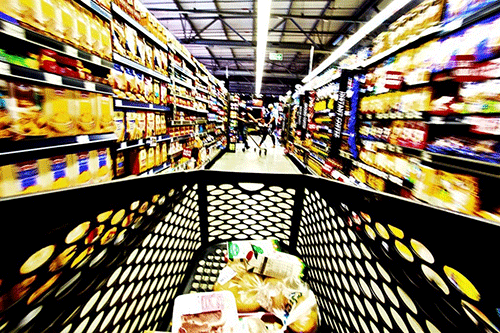Phumi Ramalepe
Retail data from Maholla, a viral consumer reward app, recently revealed South African youth, and the households that depend on them, have smaller basket sizes than most pensioners in our country.
According to the report generated from more than 500 000 receipts (from more than 2 000 different retailers and 2.38 million items sold over the last year) on the Maholla app, youth basket sizes have proven to have the lowest rand value on average in the country today compared to basket sizes of any other consumer age category in the market.
The overall basket size of youth consumers (aged between 18 and 35) has an average rand value of R212.68 per basket.
This is followed by consumers in the 50+ age category with an average basket size of R218.49. Those in the 35 to 49 age category has the highest basket at R221.30.
With youth showing the lowest rand value in terms of basket size, the captured data also indicated the drop is more significant in Limpopo (15.78%), the Free State (14.35%), and KwaZulu-Natal (13.23%) year-on-year (May 2022 to May 2023).
In the same period, youth basket sizes at Shoprite and Pick n Pay saw the highest decrease, with Shoprite’s youth basket size decreasing as much as 22.84% year-on-year. Clicks also saw a pronounced downsizing of 10.76%.
“The data collected by over half a million receipts on the Maholla app indicates that members of our youth are turning to wholesalers and bulk retailers to make ends meet.
“While traditional retailers have seen a marked contraction in basket sizes, Boxer and Game have seen an uptick, indicating a concerted effort by consumers to insulate themselves against inflation and rising food prices by purchasing their goods at wholesale prices,” said Maholla CEO Adam Reilly.
Clothing retailers like Foschini have also recorded a drop in youth basket sizes at their stores, but the opposite is true for Woolworths.
Youths rely on side hustles for survival
There is no question the decreased basket size among young people in South Africa is due to a tough economic climate.
A survey by African Bank, together with On Africa and The Choice Architects conducted on 3 000 respondents, revealed 24% of the youth population said they relied on side hustles for extra income.
This is due to the high cost of living and access to financial freedom, which affects 68% of young people.
To make ends meet, some of these side hustles include spaza shops, franchises, street vending, plumbing, hairdressing, and photography, farming and selling of crops and livestock, and more.


